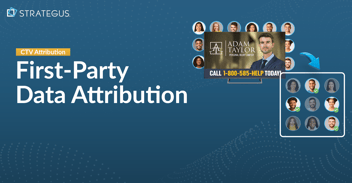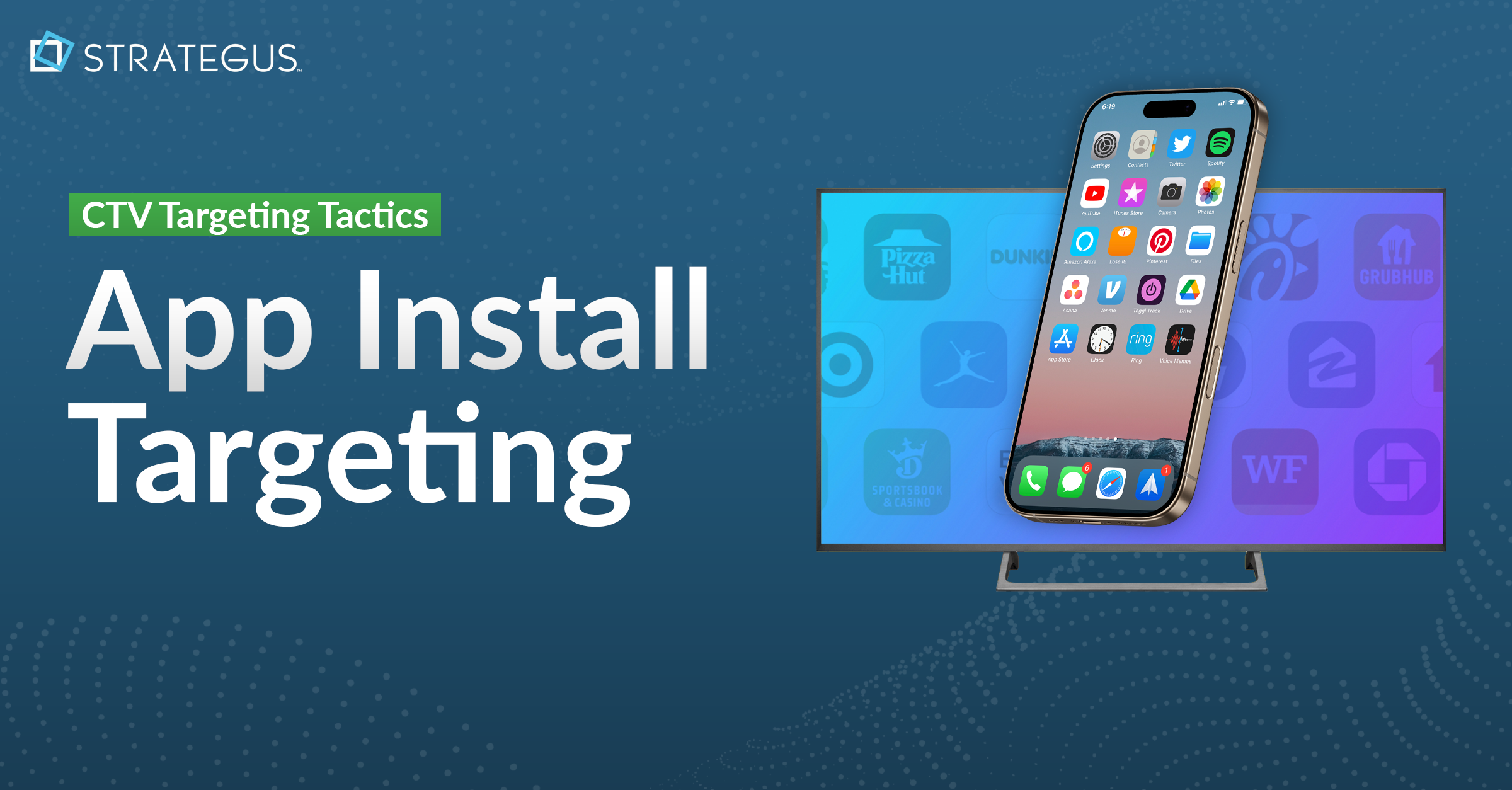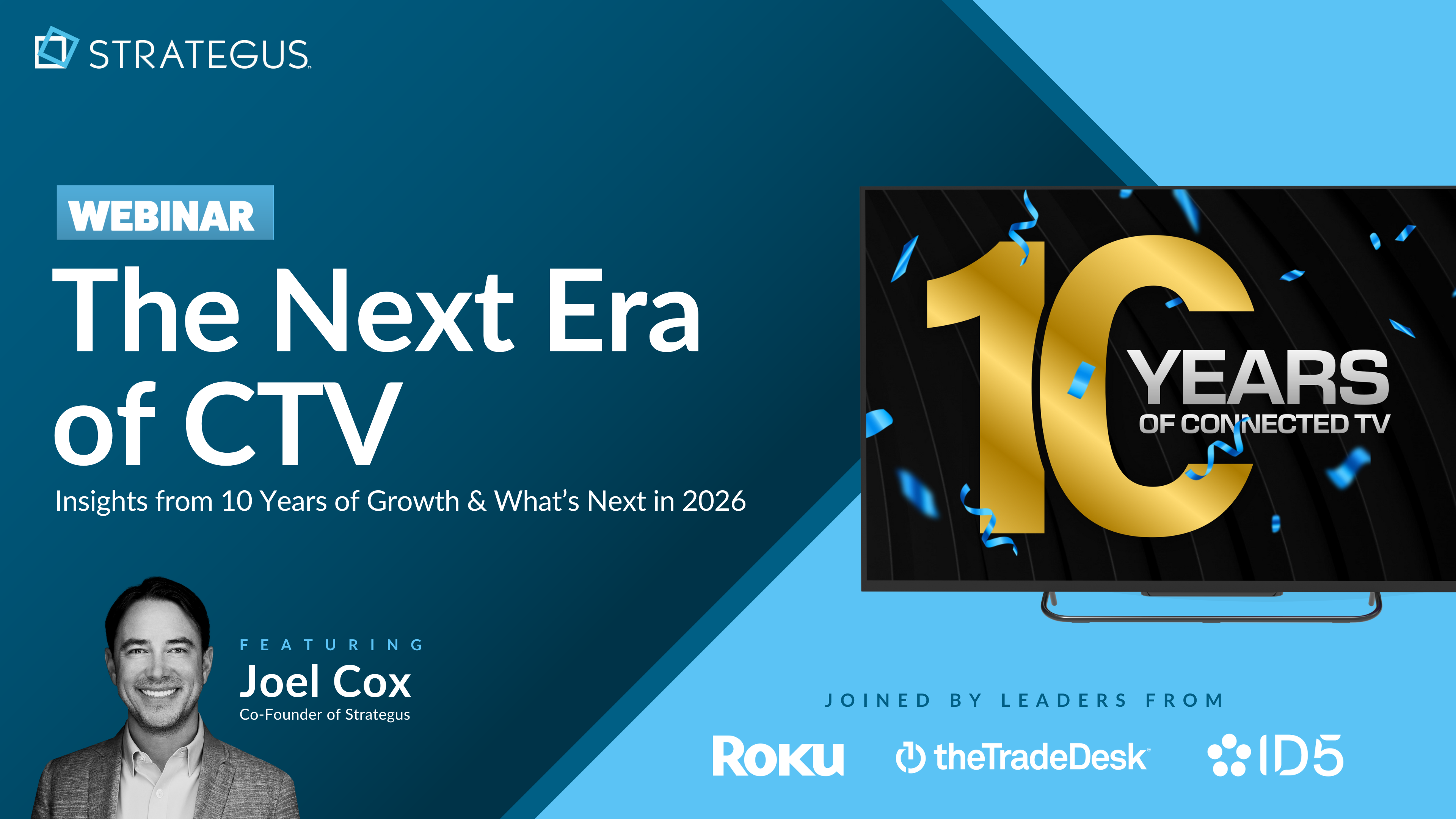- Home
- Strategus Blog
- What is Data Management Platform (DMP) in Advertising
What is Data Management Platform (DMP) in Advertising
10 minutes read

A Data Management Platform (DMP) is a central tool in digital advertising used to collect, organize, and activate data from multiple sources for targeted campaigns. With the ability to aggregate first-, second-, and third-party data, DMPs provide brands and advertisers with the insights needed to create refined audience profiles and reach specific customer segments effectively.
This technology enables organizations to access actionable data on demographics, behavior, and preferences, making it possible to deliver relevant ads that resonate with targeted viewers.
If you’re looking to hyperfocus your advertisement campaigns to maximize conversions, DMPs can be a game-changer. Here’s everything you need to know about DMPs in advertising.
Key Takeaways
- A Data Management Platform (DMP) is central to digital advertising, enabling brands to collect and analyze first-, second-, and third-party data for audience targeting.
- DMPs collect data from diverse sources—websites, mobile apps, CRM systems, and third-party providers—creating refined audience profiles based on behavior, demographics, and interests.
- Key benefits of a DMP include enhanced audience targeting, ad personalization, and improved ad campaign efficiency, all of which help advertisers reach their intended audiences more effectively.
- DMPs differ from CDPs by focusing on third-party data for short-term advertising campaigns, whereas CDPs prioritize first-party data for building long-term customer relationships.
- To implement a DMP, companies should integrate key data sources, define audience segments, and monitor campaigns to maximize effectiveness, continually refining strategies based on performance insights.
- For brands wanting expert DMP management, Strategus provides hands-on CTV advertising services, handling data integration, segmentation, and optimization for impactful, data-driven campaigns.
What is a Data Management Platform (DMP)?
A data management platform (DMP) is a centralized database that collects, organizes, and activates audience data from various sources. It acts as a hub for all your data, bringing together information from your website, apps, CRM, and other touchpoints.
DMPs use advanced AI algorithms and big data analytics to process this vast amount of data and provide valuable insights into your audience segments. By analyzing user behavior, demographics, interests, and more, a DMP can help you gain a deeper understanding of your target audience and create more effective advertising campaigns.
Examples of DMPs
Some of the most well-known DMPs in the industry include:
- Adobe Audience Manager: Adobe's DMP solution integrates with their Experience Cloud suite, offering robust data management and activation capabilities.
- Salesforce Audience Studio: Formerly known as Krux, Salesforce's DMP focuses on delivering personalized experiences across channels.
- Oracle BlueKai DMP: Oracle's DMP provides advanced data management, audience segmentation, and activation features for marketers.
Types of Data Collected by DMPs
As brands and advertisers strive to deliver targeted, high-impact campaigns, DMP play an essential role by collecting and categorizing data from diverse sources.
Here’s a breakdown of the three types of data—first-, second-, and third-party—commonly gathered by DMPs, with examples that illustrate each category.
First-Party Data
First-party data is the information collected directly from a brand’s customers through owned channels, offering insights specific to its audience. This data is highly reliable since it’s sourced directly from user interactions and provides valuable details about existing customers or prospects. Examples include:
- Customer Demographics: Basic details like age, gender, location, and job title
- Purchase History: Records of transactions, product preferences, and buying frequency
- Website and App Behavior: Data on pages viewed, clicks, time spent on site, and conversion rates
- Email and Engagement Metrics: Information on open rates, click-through rates, and user responses to marketing emails
First-party data allows brands to build precise audience profiles, personalize their messaging, and engage with users based on proven preferences and behaviors.
Second-Party Data
Second-party data is essentially first-party data shared by a trusted partner, such as a publisher or a company within a relevant industry. This data can help advertisers reach new audiences that closely align with their target demographics, leveraging the data owner’s unique insights. Examples of second-party data include:
- Publisher Data: Viewing habits, genre preferences, and user engagement metrics shared by streaming platforms or media companies
- Retail Partner Data: Details on customer demographics and product interests shared through partnerships with complementary brands
- Event Engagement: Information on attendees’ interests, behaviors, and demographics from co-hosted events or webinars
Second-party data extends the reach of first-party data and enhances targeting by connecting brands to new but relevant audience segments.
Third-Party Data
Third-party data is gathered by external providers from a variety of websites, apps, and platforms and offers a broader, less specific view of market audiences. While less precise, it provides a larger dataset to identify general patterns or uncover new segments. Examples of third-party data include:
- Audience Segments: General categories like “outdoor enthusiasts” or “luxury shoppers”
- Interest and Behavioral Data: Insights on hobbies, online behavior, recent web searches, or purchase patterns
- Socioeconomic Data: Information on income brackets, education levels, and general lifestyle indicators
Together, these types of data provide DMPs with a well-rounded set of insights, allowing advertisers to build informed, targeted campaigns that reach audiences in impactful ways.
Benefits of Using a DMP in Advertising
A DMP offers numerous benefits that can help you take your advertising efforts to new heights. Let's explore some of the key advantages of incorporating a DMP into your advertising strategy.
Improved Audience Targeting
One of the primary benefits of using a DMP is the ability to create highly specific audience segments based on demographics, interests, and behaviors. By analyzing the wealth of data collected from various sources, a DMP can help you identify and target the most relevant audiences for your campaigns. This level of granularity allows you to reach the right people with the right message, increasing the likelihood of engagement and conversion.
Enhanced Ad Personalization
With a DMP, you can deliver tailored ad experiences across multiple channels, such as display, social media, and mobile. By leveraging the insights gained from audience data , you can create personalized ad content that resonates with each individual user. This level of personalization can lead to higher ad relevance, improved click-through rates, and ultimately, better campaign performance.
Increased Campaign Efficiency
A DMP helps you optimize your ad spend by targeting the right audience at the right time. By focusing your efforts on the most valuable audience segments, you can reduce wasted impressions and improve the overall efficiency of your campaigns.
Additionally, a DMP can help you identify and suppress audiences that are less likely to convert, further streamlining your advertising efforts and maximizing your return on investment.
Better Data Management
Managing audience data from multiple sources can be a daunting task. A DMP centralizes and organizes all your audience data in one place, making it easier to access, analyze, and activate. This unified view of your audience allows you to make data-driven decisions and ensures that your advertising strategies are based on accurate and up-to-date information. Moreover, a DMP can help you maintain data privacy and compliance with regulations like GDPR and CCPA by providing tools for data governance and consent management.
How Does a DMP Work?
A DMP works by gathering, organizing, and activating data from various sources to create targeted audience segments for advertising. It starts with data ingestion, where first-party (e.g., CRM and website data), second-party (partner-shared data), and third-party data (external sources) are collected and centralized within the DMP. This data is then categorized and organized based on attributes like demographics, behaviors, and preferences.
Once organized, the DMP uses data processing and analysis to build rich audience profiles, which can include interests, purchase intentions, or browsing patterns. With this information, advertisers can create precise audience segments tailored to specific campaign goals.
Finally, the DMP integrates with demand-side platforms (DSPs) and other ad-tech systems to activate these segments, enabling programmatic ad placement across channels like CTV, social media, and display. Throughout this process, a DMP also provides performance insights to refine future targeting and campaign strategies.
DMP vs CDP: What's the Difference?
A DMP and a Customer Data Platform (CDP) both handle data for targeted marketing, but they serve different functions and use cases. DMPs primarily gather, categorize, and activate anonymous data for short-term advertising campaigns, focusing on third-party data like audience segments, behaviors, and demographic trends. This data is often used for broad-based targeting and programmatic advertising.
On the other hand, a CDP is designed to handle first-party data collected directly from a brand’s customers. It creates persistent customer profiles by integrating data from multiple touchpoints (e.g., CRM, website behavior, transactions), allowing marketers to personalize campaigns and engage customers across channels.
Key differences include:
- Data Type: DMPs often rely on third-party data; CDPs use first-party, identifiable data.
- Data Storage: DMP data is typically temporary, while CDP data is retained for long-term use.
- Purpose: DMPs support targeted advertising, whereas CDPs focus on building and nurturing customer relationships.
How to Implement a DMP in Your Advertising Strategy
Implementing a DMP in your advertising strategy requires careful planning and execution. Follow these steps to ensure a successful DMP integration:
1. Identify Your Data Sources
The first step is to determine which data sources you want to integrate into your DMP. This includes first-party data from your website, mobile apps, and CRM system, as well as second-party and third-party data from partners and data providers. Prioritize data sources that provide valuable insights into your target audience's behaviors, interests, and demographics.
2. Define Your Audience Segments
Once you have integrated your data sources, use the DMP's segmentation tools to create audience segments based on specific attributes and behaviors. For example, you might create segments based on age, gender, location, purchase history, or website interactions. These segments will serve as the foundation for your targeted advertising campaigns.
3. Integrate with Your Ad Tech Stack
To activate your audience data, you need to connect your DMP with other platforms in your ad tech stack, such as demand-side platforms (DSPs) and supply-side platforms (SSPs). This integration allows you to seamlessly transfer audience segments to your chosen advertising channels, enabling targeted ad delivery across display, mobile, social media, and more.
DSPs automate the ad buying process, allowing you to bid on ad inventory in real time based on your audience targeting criteria. SSPs, on the other hand, help publishers manage and optimize their ad inventory. By integrating your DMP with these platforms, you can ensure that your ads reach the right audience at the right time.
4. Monitor and Optimize Campaigns
As your campaigns run, use your DMP's reporting and analytics features to monitor performance and gain valuable insights. Analyze metrics such as click-through rates, conversion rates, and audience engagement to identify areas for improvement. Based on these insights, refine your audience targeting, personalize your ad creative, and adjust your bidding strategies to optimize campaign performance.
DMPs provide a wealth of data that can help you make informed decisions about your advertising strategy. Regularly review your DMP data to identify new audience segments, uncover emerging trends, and adapt your campaigns accordingly. By continuously monitoring and optimizing your campaigns based on DMP insights, you can maximize your advertising ROI and achieve better results over time.
Tips for Maximizing DMP Effectiveness
Implementing a DMP is just the first step in enhancing your advertising strategy. If you’re looking to maximize your ROI, here are some steps you can take.
Go Hands Off with Strategus
Implementing and maximizing a DMP effectively can be challenging. From integrating diverse data sources to building precise audience segments, fine-tuning targeting, and continuously optimizing campaigns, the process requires specialized skills and resources.
For brands aiming to get the most from their data without the burden of in-house management, a hands-on partner like Strategus is the ideal solution.
Strategus offers a fully managed, data-driven CTV advertising service, expertly handling each aspect of your DMP strategy. With access to over 400 data and media partners, Strategus crafts detailed audience profiles that align with your unique campaign goals. We manage the entire workflow, from strategy and data activation to real-time performance tracking and multi-device retargeting, ensuring ads reach the right audiences at the right times. Strategus also provides transparent, in-depth reporting, giving you clear insights into campaign ROI.
Talk to our experts at Strategus today to see how our managed DMP solution can elevate your CTV advertising outcomes.
Ensure Data Quality
The accuracy and reliability of your DMP's insights depend on the quality of the data you feed into it. Regularly clean and update your data to remove any duplicates, inconsistencies, or outdated information. This will help you maintain a high level of data integrity and ensure that your audience segments and targeting decisions are based on accurate information.
Leverage First-Party Data
While third-party data can be useful for expanding your reach, first-party data is often more reliable and valuable. Prioritize collecting and analyzing data from your own sources, such as your website, mobile apps, and CRM system. First-party data provides a direct link to your audience and can offer deeper insights into their behaviors, preferences, and interactions with your brand.
Combine DMP with a DSP
To truly unlock the potential of your DMP, consider integrating it with a programmatic demand-side platform (DSP). A DSP automates the ad buying process, allowing you to bid on ad inventory in real time based on your audience targeting criteria. By combining the insights from your DMP with the efficiency of a DSP, you can create highly targeted, data-driven advertising campaigns that deliver better results.
Measure and Attribute Performance
Measuring the impact of your DMP on campaign performance is crucial for understanding its effectiveness and identifying areas for improvement. Implement robust CTV measurement and attribution solutions to track key metrics such as reach, engagement, and conversion rates. This will help you assess the ROI of your DMP investment and make data-driven decisions to optimize your advertising strategy over time.
Final Thoughts - Is a DMP Worth the Investment for Your Business?
Investing in a DMP can provide immense value for businesses looking to create targeted, data-driven advertising campaigns. DMPs allow for the collection and organization of first-, second-, and third-party data, building refined audience segments that enhance targeting precision and campaign effectiveness.
However, fully implementing a DMP and extracting its value requires expertise, ongoing optimization, and seamless integration with broader marketing strategies—often challenging for in-house teams to manage alone.
For businesses seeking to maximize their DMP investment without the operational strain, partnering with Strategus offers a streamlined path to success. Strategus handles the complex data processes, audience segmentation, and real-time optimizations needed to achieve impactful results, giving brands the freedom to focus on growth.
Ready to reinvent your data strategy? Connect with Strategus today and find out how expert-led, data-driven CTV advertising can help your business.
Strategus is a managed services connected TV(CTV) advertising agency with over 60,000+ campaigns delivered. Find out how our experts can extend your team and drive the result that matter most.
Talk to an Expert
Seeking a Custom CTV Strategy That Delivers?
What to read next
App Event Tracking: Tie Mobile App Activity to CTV Campaigns
Let’s say you’re running a CTV campaign for a personal finance app.
5 minutes read

Stop Guessing Who Your Audience Is — Let Their Apps Tell You
Connected TV (CTV) targeting often falls in one of two camps.
8 minutes read
See Who Bought After Your Ad + How Much They Spent
You can’t improve what you can’t measure. And for years, that’s been a major problem with TV advertising.
4 minutes read

First-Party Attribution: Match Ads to Sales With CRM Data
The value of first-party data continues to grow.
7 minutes read













